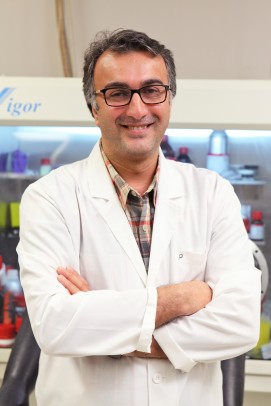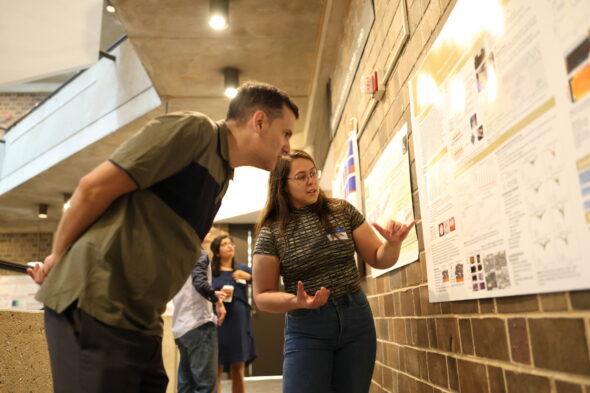Department of Energy ‘Earthshot’ grants fund UIC research on green tech advances
Creating new technologies that reduce carbon emissions and slow climate change is one of the great scientific ambitions of the 21st century. To meet this challenge, the U.S. Department of Energy created the Energy Earthshots Initiative, a funding program organized around driving breakthroughs in clean energy, next-generation batteries and decarbonization.
The latest $264 million round of Energy Earthshot grants, announced in late 2023, included awards to projects led by and involving University of Illinois Chicago researchers in the College of Engineering and College of Liberal Arts and Sciences. Their research will develop new materials for carbon capture and hydrogen transportation and new processes for the cleaner production of steel.

The DOE funding established 11 new Energy Earthshot Research Centers around the United States and funded 18 university-based research projects to conduct basic science research supporting their missions. Among this latter group is a $3 million grant to a team led by Amin Salehi-Khojin, professor of mechanical and industrial engineering at UIC, including researchers from UIC, the University of Chicago and the University of Nebraska.
The collaboration will develop new approaches for the design and synthesis of porous frameworks — pockmarked films that offer increased surface area for the electrochemical reactions underlying many green technologies. However, these structures are difficult to synthesize using traditional “wet chemistry” methods, particularly at the thinness required for advanced applications.
The research team will develop a new approach using a combination of AI and computational design and vapor phase synthesis, which will enable tighter control of the properties and growth of porous frameworks. The advances are expected to support multiple Energy Earthshot goals, including carbon capture technologies that remove carbon dioxide from the atmosphere and the safe transportation of explosive hydrogen fuels that can reduce industrial emissions.
The work builds upon previous clean energy breakthroughs from Salehi-Khojin’s laboratory, including a lithium-air battery and a solar cell that converts carbon dioxide into fuel using sunlight.
“Every new phenomenon requires new physics and new chemistry if you want to make a breakthrough in the area rather than just an incremental improvement or optimization,” Salehi-Khojin said. “We want to expand the discovery of porous frameworks, expand their architecture and expand the chemistry of the material. I believe that this can have a huge impact in the field.”
Additional UIC researchers on the porous frameworks project include Santanu Chaudhuri, Constantine M. Megaridis and Thomas Theis in the College of Engineering; Fatemeh Khalili-Araghi and Russell Hemley in the department of physics; and Ksenija Glusac and Jordi Cabana in the department of chemistry.

Cabana will also participate in the multi-institutional Center for Steel Electrification by Electrosynthesis (C-STEEL), another center awarded Energy Earthshot funding in 203. The center, led by Argonne National Laboratory, will target the substantial greenhouse gas emissions of the steelmaking industry, developing innovative and low-cost processes to replace blast furnaces.
Currently, iron ore must be heated to temperatures higher than 2500 degrees Fahrenheit — hotter than an erupting volcano — to be converted into metal or alloys for manufacturing. C-STEEL researchers seek to replace this carbon-intense step with electrodeposition, a chemical process that can happen with less heat, potentially even at room temperature.
“As renewable electricity becomes increasingly widespread, electrochemistry becomes a compelling alternative to the traditional industrial approaches to synthesize molecules and materials using heat,” said Cabana, professor of chemistry at UIC and scientist and group leader at Argonne. “The electrochemical generation of steel represents a true Earthshot as it would provide avenues of decarbonization to one of the most heat-intensive industries today.”
Beyond Argonne and UIC, C-STEEL includes researchers from Oak Ridge National Laboratory, Case Western Reserve University, Northern Illinois University and Purdue University Northwest.
Categories
Featured Academic Research, Research, UIC today
Topics
clean energy, electrochemistry, engineering, Hydrogen, sustainability
